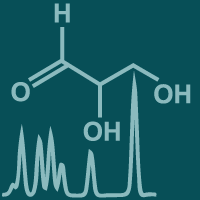Topic Menu
► Topic MenuTopic Editors



Redox Metabolism
Topic Information
Dear Colleagues,
Cellular redox state depends on several redox reactions associated with reactive oxygen species (ROS) generation, scavenging mechanisms and ROS produced by different metabolic reactions. Redox balance underlies cellular homeostasis. Among the causes of oxidative stress production, the dysfunction and inefficiency of oxidative phosphorylation (OxPhos) seem to play an important role. This is because this metabolism is the principal user of oxygen in cells, converting it into water via monoelectronic transfers. As long as these electronic transfers are carried out correctly, ROS production is limited and counterbalanced by endogenous antioxidant defenses, guaranteeing an optimum efficiency of cellular energy production. On the contrary, in the presence of mutations in the respiratory complexes proteins or damage to the membrane structure that houses the OxPhos machinery, the electronic transfer occurs in a more 'disordered' manner, leading to uncontrolled ROS production.
Redox metabolism is closely linked to cell pathophysiology, and the impairment of the crosstalk between redox homeostasis and cellular metabolism has been observed in many pathological processes, such as cancer, neurodegeneration and cardiovascular dysfunction. Tumor cells harbor genetic alterations that promote a continuous and elevated production of ROS. Whereas such oxidative stress conditions would be harmful to normal cells, they facilitate tumor growth in multiple ways. Tumors reprogram pathways of nutrient acquisition and metabolism to meet the bioenergetic, biosynthetic, and redox demands of malignant cells. Furthermore, several findings exemplify the distinctive roles of intracellular and extracellular redox state in the etiology and maintenance of oxidative stress associated with metastasis.
Therefore, understanding redox metabolism supports the development of new promising therapeutic approaches. The aims of the topic “Redox Metabolism” is to collect original research articles and reviews on recent basic and applied research aspects focused on the crosstalk between central metabolism and cellular redox state.
Prof. Dr. Rosario Ammendola
Dr. Fabio Cattaneo
Dr. Silvia Ravera
Topic Editors
Keywords
- redox state
- redox signalling
- redox metabolism
- reactive oxygen species
- oxidative stress
- cell metabolism
- cellular signalling
- oxidative phosphorylation
- repiratory complexes
- antioxidant defenses
Participating Journals
| Journal Name | Impact Factor | CiteScore | Launched Year | First Decision (median) | APC |
|---|---|---|---|---|---|

Antioxidants
|
7.0 | 8.8 | 2012 | 13.9 Days | CHF 2900 |

Metabolites
|
4.1 | 5.3 | 2011 | 13.2 Days | CHF 2700 |

MDPI Topics is cooperating with Preprints.org and has built a direct connection between MDPI journals and Preprints.org. Authors are encouraged to enjoy the benefits by posting a preprint at Preprints.org prior to publication:
- Immediately share your ideas ahead of publication and establish your research priority;
- Protect your idea from being stolen with this time-stamped preprint article;
- Enhance the exposure and impact of your research;
- Receive feedback from your peers in advance;
- Have it indexed in Web of Science (Preprint Citation Index), Google Scholar, Crossref, SHARE, PrePubMed, Scilit and Europe PMC.

